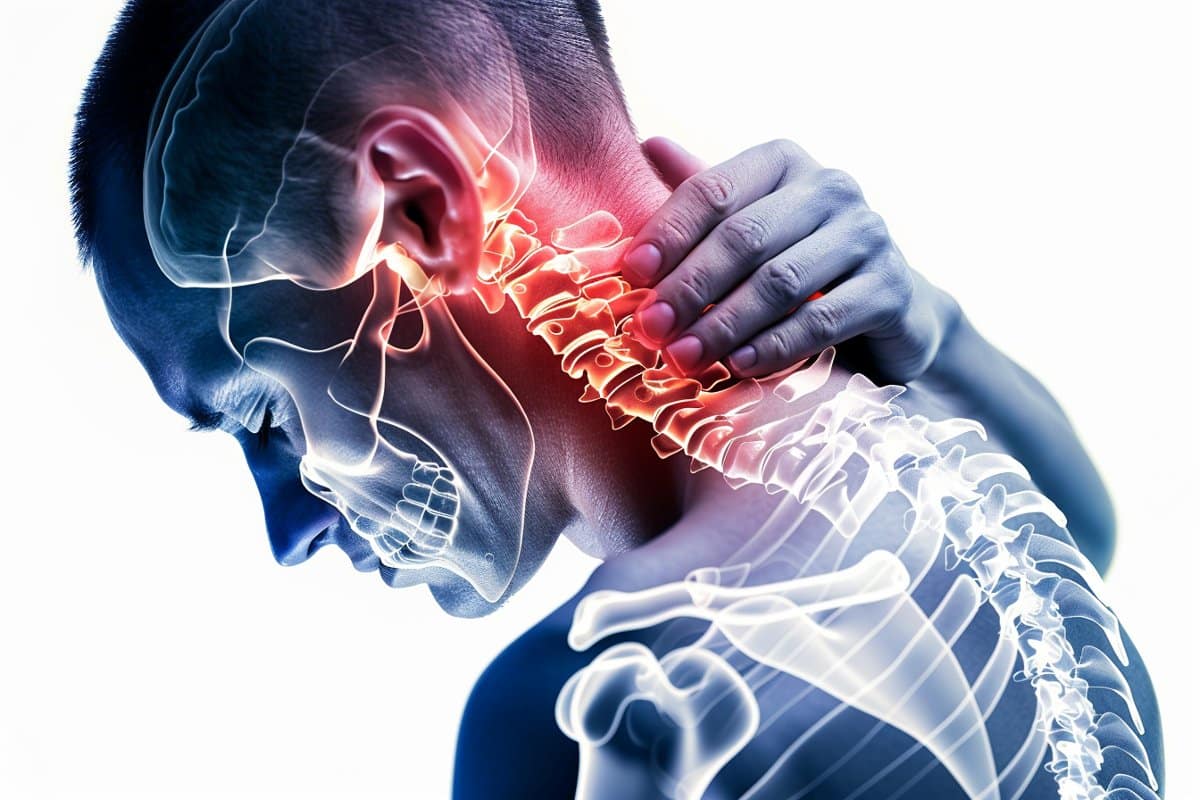Summary: Socioeconomic status, lifestyle, and psychological factors significantly influence the development of chronic musculoskeletal pain after injury. The study found that individuals from lower socioeconomic backgrounds are twice as likely to experience chronic pain, and those with additional risk factors such as smoking, fear of movement, and poor support networks are up to seven times more likely.
Chronic pain, affecting 43% of the UK population, leads to decreased quality of life and higher risks of serious health conditions. The findings advocate for a more holistic, person-centered approach to treatment that goes beyond physical rehabilitation to include psychosocial well-being.
Key Facts:
- Socioeconomic status, smoking, fear of movement, and poor support significantly raise the risk of developing chronic pain post-injury.
- Chronic musculoskeletal pain is a major disability worldwide, impacting nearly half of the UK population and contributing to other severe health issues.
- Current treatments focusing only on the site of injury are often ineffective, suggesting the need for comprehensive care that addresses biological, psychological, and social factors.
Source: University of Birmingham
Development of chronic musculoskeletal pain can be influenced by socioeconomics, fear of movement, smoking and poorer support networks, new research shows.
In a systematic review of current evidence, researchers found that people from a lower socioeconomic background were twice as likely to develop chronic pain following injury.

Those with a combination of characteristics including smoking, high level of pain at the time of injury, fear of movement, poorer support networks and a lower level of education or household income, may be seven times more likely to develop chronic pain after injury.
The results are published in PLOS One.
Pain is described as ‘acute’ when it has been present for a short period of time – anything that lasts for less than three months after initial injury. Pain is described as chronic when it has been present for longer than three months after initial injury.
Chronic musculoskeletal pain affects about 43 per cent of the UK population and is the greatest cause of disability worldwide, often persisting for many years or indefinitely. People with chronic pain often experience poorer quality of life and are also more likely to develop diseases including cancer, cardiovascular diseases and diabetes.
Current approaches to managing chronic pain focus on physical rehabilitation at the site of the pain, or injury. However, the body’s healing process usually takes place over no longer than three months, suggesting that the reasons for longer-term pain are more complex.
Lead author Michael Dunn, of the University of Birmingham and St. George’s University Hospitals NHS Foundation Trust, said: “The purpose of acute pain is to alter behaviour to protect the body from harm, but chronic pain persists because of a sensitised nervous system that continues our experience of pain, even after the healing process has completed.”
This process, the researchers found, is influenced by a range of psychological and social factors and so treatment which focuses solely on the injured body part is often ineffective.
Mr Dunn continued: “The characteristics that we have identified are related particularly to an individual’s experiences, rather than a type of injury.
“For that reason, approaches to treating people with musculoskeletal injuries should be more person-centred, focusing on broader biological, psychosocial and social well-being. Put simply, current healthcare approaches do not address all the reasons people do not get better.”
The researchers also identified other factors related to developing chronic pain, such as lower job satisfaction, stress and depression. These characteristics were supported by lower quality evidence, but are also linked to lower socioeconomic backgrounds.
“People from lower socioeconomic backgrounds are twice as likely to develop chronic pain after injury.
“This indicates that not only are current healthcare approaches inadequate, they may also be discriminatory, with current healthcare approaches that are orientated around the injured body part being geared towards those from higher socioeconomic backgrounds who are less likely to experience these psychological or social factors,” said Mr Dunn.
About this pain and social neuroscience research news
Author: Beck Lockwood
Source: University of Birmingham
Contact: Beck Lockwood – University of Birmingham
Image: The image is credited to Neuroscience News
Original Research: Open access.
“The biopsychosocial factors associated with development of chronic musculoskeletal pain. An umbrella review and meta-analysis of observational systematic reviews” by Michael Dunn et al. PLOS ONE
Abstract
The biopsychosocial factors associated with development of chronic musculoskeletal pain. An umbrella review and meta-analysis of observational systematic reviews
Aim
The aim of this umbrella review was to establish which biopsychosocial factors are associated with development of chronic musculoskeletal pain.
Methods
Ovid Medline, Embase, Web of Science Core Collection, Cochrane Database of Systematic Reviews, Database of Abstracts of Reviews of Effects, PsycINFO, CINAHL, PEDro, PROSPERO, Google Scholar and grey literature were searched from database inception to 4th April 2023. Systematic reviews of observational prospective longitudinal studies, including populations with <3 months (not chronic) musculoskeletal pain, investigating biopsychosocial factors that contribute to development of chronic (>3 months) musculoskeletal pain.
Two reviewers searched the literature, assessed risk of bias (Assessing the Methodological Quality of Systematic Reviews-2), and evaluated quality (Grading of Recommendations, Assessment, Development and Evaluation) to provide an overall statement on the certainty of evidence for each biopsychosocial factor. Data analysis was performed through random effects meta-analysis (including meta-analysis of meta-analyses where possible) and descriptive synthesis.
Results
13 systematic reviews were included comprising 185 original research studies (n = 489,644 participants). Thirty-four biopsychosocial factors are associated with development of chronic musculoskeletal pain. Meta-analyses of odds and/or likelihood ratios were possible for 25 biopsychosocial factors. There is moderate certainty evidence that smoking (OR 1.24 [95%CI, 1.14–1.34), fear avoidance (LR+ 2.11 [95%CI, 1.59–2.8]; LR- 0.5 [95%CI, 0.35–0.71]) poorer support networks (OR 1.21 [95%CI, 1.14–1.29]), lower socioeconomic status (OR 2.0 [95%CI, 1.64–2.42]), and high levels of pain (OR 5.61 [95%CI, 3.74–8.43]) are associated with development of chronic musculoskeletal pain (all P<0.001). Remaining factors are of low or very low certainty evidence.
Conclusions and relevance
There is moderate certainty evidence that smoking, fear avoidance, poorer support networks, lower socioeconomic status, and high levels of pain are associated with development of chronic musculoskeletal pain. High risk of bias was evident in most included reviews; this highlights the need for higher quality systematic reviews.






